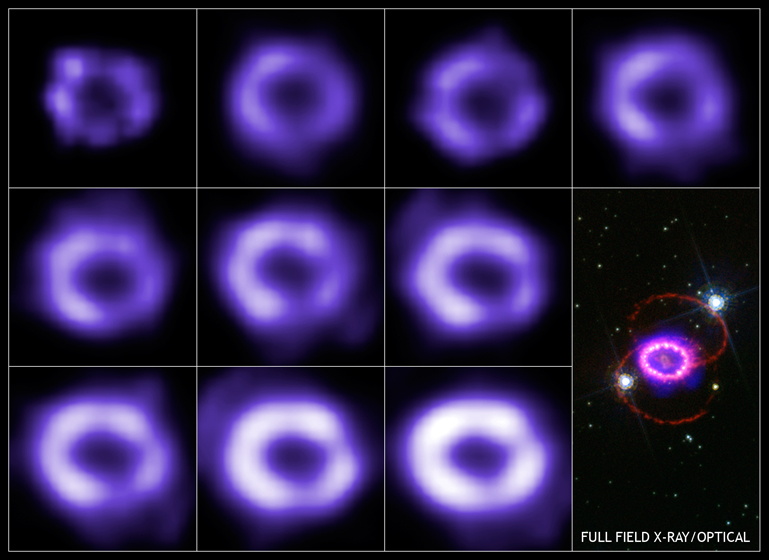
 Credit: X-ray: NASA/CXC/PSU/S.Park & D.Burrows.; Optical: NASA/STScI/CfA/P.Challis
Credit: X-ray: NASA/CXC/PSU/S.Park & D.Burrows.; Optical: NASA/STScI/CfA/P.Challis
Now Showing in the Center Ring
Supernova 1987A in the Large Magellanic Cloud was the nearest supernova explosion in about 383 years. It provided astronomers a never-before-available case study of how these titanic stellar explosions interact with their surroundings. High resolution imaging with the Hubble Space Telescope (lower right) revealed a surprising three-ring "circus" around the supernova. The origin of these rings are still a matter of some controversy but were probably produced by the interaction of a "bi-polar" wind from the star with the surrounding circumstellar material in the aeons just before the star exploded. The Chandra X-ray Observatory shows that the central ring (superimposed in blue on the HST image in the lower right) is a bright X-ray source, and becoming brighter, as the montage of Chandra images (from Jan 2000 to Jan 2005, upper left to lower right) clearly shows. But part of the remnant is still unidentified: the core of the exploded star, which should be left behind as a neutron star or black hole.
Last Week *
HEA Dictionary * Archive
* Search HEAPOW
* Education
Each week the HEASARC
brings you new, exciting and beautiful images from X-ray and Gamma ray
astronomy. Check back each week and be sure to check out the HEAPOW archive!
Page Author: Dr. Michael F. Corcoran
Last modified Monday, 26-Feb-2024 17:46:56 EST


